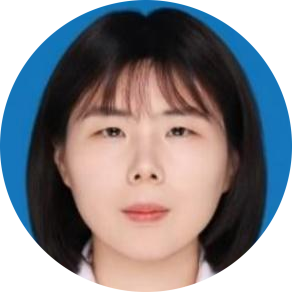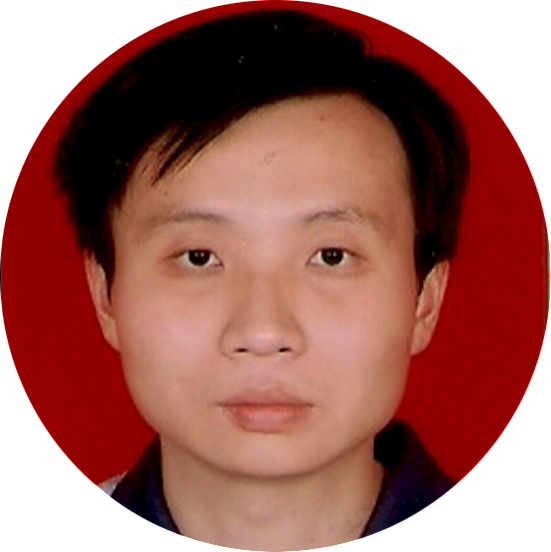

Prof. Yanli Xu
Shanghai Maritime University, China
Biography: Yanli Xu, a professor and associate Dean at the School of Information Engineering, Shanghai Maritime University. She graduated from Southeast University in 2012 with a Information and Communication Engineering Ph. D. degree. Her current research interests focused on integrated space-air-ground-sea communication technology and edge computing. These technologies provide high reliability and low delay information transmission for Marine development, environment monitoring, shipping and marine security. Dr. Xu has published over 40 top-quality academic papers, and she has served as guest editor or TPC chair for well-known journals and conferences in the field. She has also been honored as Special Expert for Talent Work in Liaoning Province and the Pearl Plan of Shanghai Pudong New Area.

Assoc. Prof. Qiong Wu
Jiangnan University, China
Biography: Qiong Wu (Senior
Member, IEEE) received the Ph.D. degree in information
and communication engineering from National Mobile
Communications Research Laboratory, Southeast
University, Nanjing, China, in 2016. From 2018 to 2020,
he was a postdoctoral researcher with the Department of
Electronic Engineering, Tsinghua University, Beijing,
China. He is currently an associate professor with the
School of Internet of Things Engineering, Jiangnan
University, Wuxi, China.
Dr. Wu is a Senior
Member of IEEE and China Institute of Communications. He
has published over 90 papers in high impact journals and
conferences, and authorized over 30 patents. He was
elected as one of the world's top 2% scientists in 2024
and 2022 by Stanford University. He has received the
young scientist award for ICCCS'24 and ICITE’24. He won
the high-impact paper of Chinese Journal of Electronics
award. He has been awarded the National Academy of
Artifical Intelligence (NAAI) Certified AI Senior
Engineer, and was the excellent reviewer for Computer
Networks in 2024. He has severed as the editorial board
member, early career editorial board member, (lead)
guest editor for over 10 Journals, as well as the TPC
chair, Special Session Chair, workshop chair, TPC member
and session chair for over 20 international Conferences.
His current research interest focuses on vehicular
networks, autonomous driving communication technology,
and machine learning.

Assoc. Prof. Tianming Ma
Shanghai University of Engineering Science, China
Biography: Tianming (Tian-Ming) Ma received Ph.D. degree from Shanghai institute of Microsystem and Information Technology (SIMIT), Chinese Academy of Sciences (CAS), Shanghai, China in 2012. He was a post-doctoral researcher and obtained the first-class general financial grant from the China Postdoctoral Science Foundation in Tsinghua University, Beijing, China from 2012 to 2014. Now he is an associate professor in the School of Electronic & Electrical Engineering (SEEE), Shanghai University of Engineering Science (SUES), Shanghai, China and serve as the leader of the intelligent wireless perception research team in SEEE. He has authored/co-authored over 60 journal/conference papers and held 10 Chinese authorized invention patents as the first inventor or as a mentor for graduate students, of which 3 have already achieved technology transfer. He is a member of IEEE ComSoc & IEEE SPS, a senior member of CIC, a senior member & life member of CIE, a life member of SCS, a council member of SHIE, and the main contact person of RISTA member units. He has served as an OC member/TPC member/Track Chair/Workshop Chair/Session Chair/Special Session Chair/Program Committee Chair/Publicity Chair/Financial Chair/Moderator/Invited Speaker of prominence academic conferences for more than 30 times and received Outstanding Organization Award. He has also served as an official reviewer for many domestic and international journals in the field of communications, such as IEEE TWC, IEEE TVT, IEEE CNCOMM, IEEE CL, IEEE SPL, CJE, JC, JXD, JEIT, JSEE, JCIN, JCUPT, etc. His current interests include 6G waveform modulation technologies & multiple access technologies.
 |
 |
 |
 |
 |
||||
| Prof. Yijun Cui Nanjing University of Aeronautics and Astronautics, China |
Prof. Yanli Xu Shanghai Maritime University, China |
Prof. Kun Guo East China Normal University, China |
Prof. Cui-qin Dai Chongqing University of Posts and Telecommunications, China |
Prof. Du Li Nanjing University, China |
||||
 |
 |
 |
 |
 |
||||
| Prof. Zhaozhong Guo Beijing Information Science and Technology University, China |
Assoc. Prof. Bingcheng Zhu Southeast University, China |
Assoc. Prof. Xingyu Lu Nanjing University of Science and Technology, China |
Assoc. Prof. Simeng Feng Nanjing University of Aeronautics and Astronautics, China |
Assoc. Prof. Xiaojun Hei Huazhong University of Science and Technology, China |
||||
 |
 |
 |
 |
 |
||||
| Associate Researcher Jiao Zhang Purple Mountain Laboratories, China |
Assoc. Prof. Han Wu Sichuan University, China |
Assoc. Prof. Tianming Ma Shanghai University of Engineering Science, China |
Assoc. Prof. Fanfan Shen Nanjing Audit University, China |
Associate Researcher Shuai Ma Peng Cheng Laboratory, China |
||||
 |
 |
 |
 |
 |
||||
| Associate Researcher Xinjiang Xia Purple Mountain Laboratories, China |
Assoc. Prof. Chuanting Zhang Shandong University, China |
Research Assoc. Prof. Chen Huang Purple Mountain Laboratories & Southeast University, China |
Assoc. Prof. Ruoyu Zhang Nanjing University of Science and Technology, China |
Assoc. Prof. Jihao Fan Nanjing University of Science and Technology, China |
||||
 |
 |
 |
 |
 |
||||
| Assoc. Prof. Xiangping Zhai Nanjing University of Aeronautics and Astronautics, China |
Assoc. Prof. Mingjie Shao Academy of Mathematics and Systems Science, Chinese Academy of Sciences, China |
Assoc. Prof. Bingpeng Zhou Sun Yat-sen University, China |
Assoc. Prof. Chao Fang Beijing University of Technology, China |
Lecturer Jiachi Zhang Shandong Police College, China |
||||
 |
 |
 |
||||||
| Lecturer Li Yan University of Electronic Science and Technology of China, China |
Dr. Yanqing Xu The Chinese University of Hong Kong, Shenzhen, China |
Assoc. Prof. Ling Liu Guangzhou Institute, Xidian University, China |